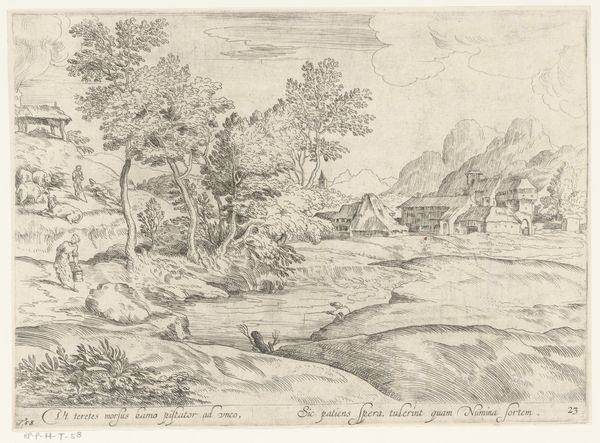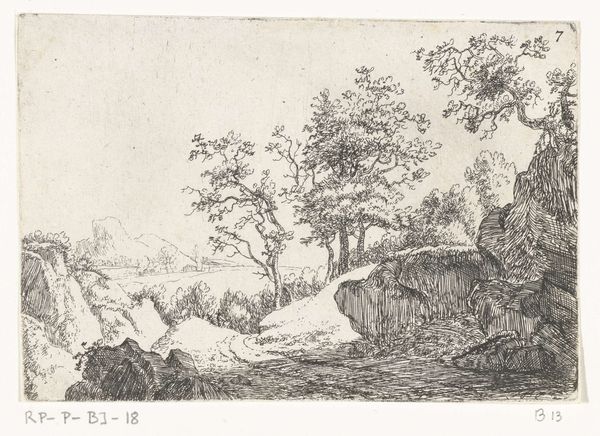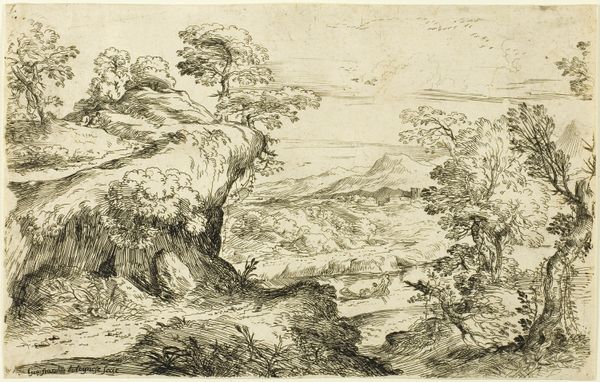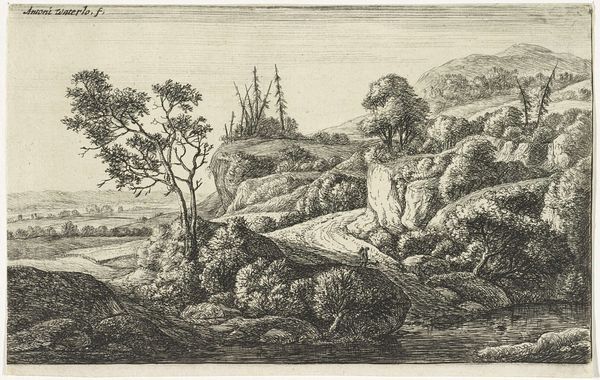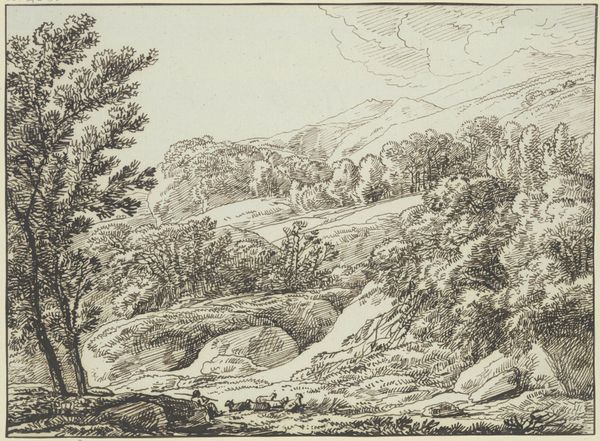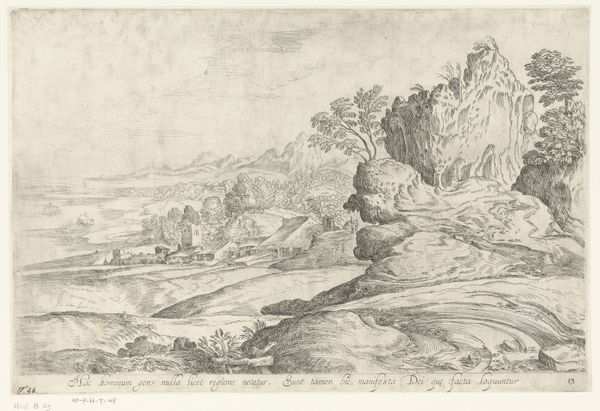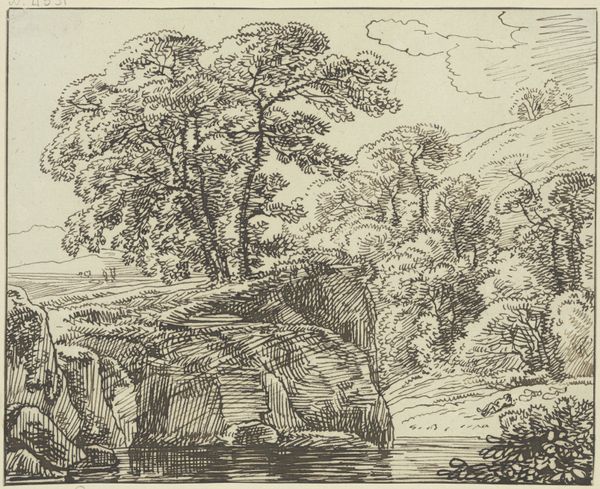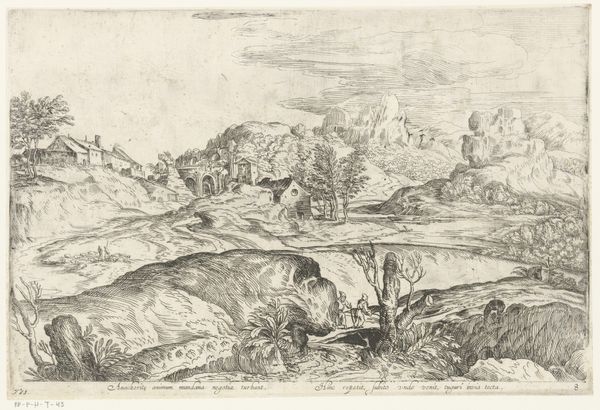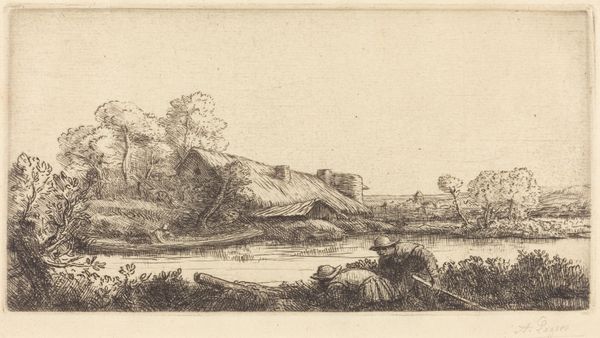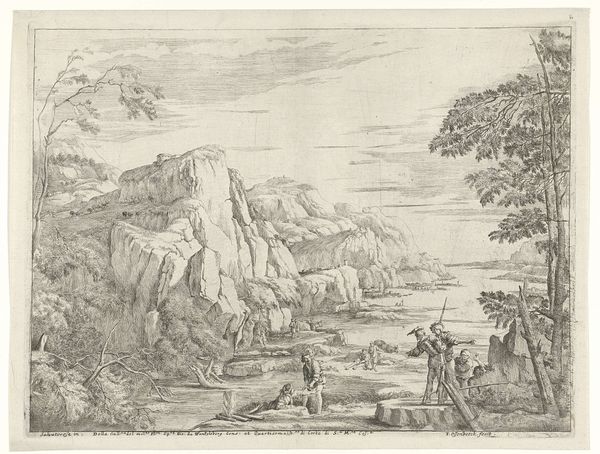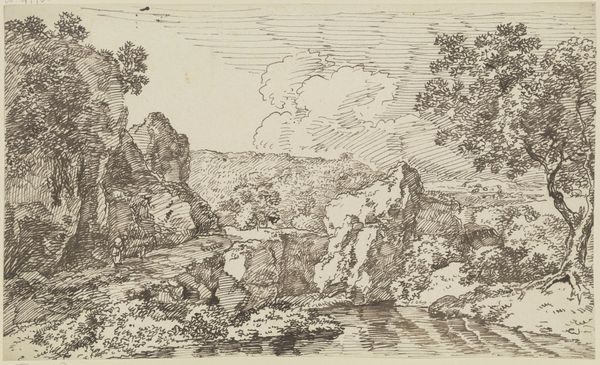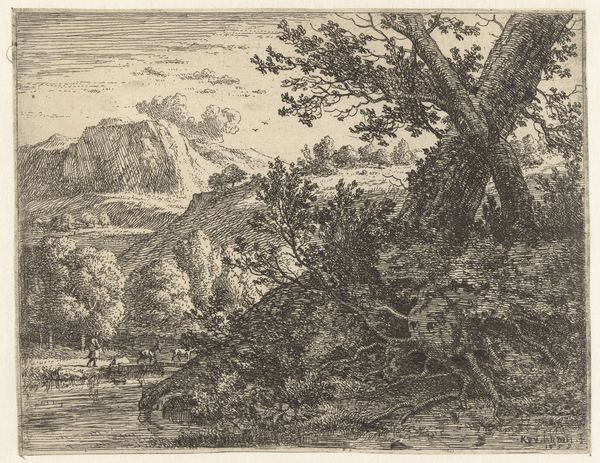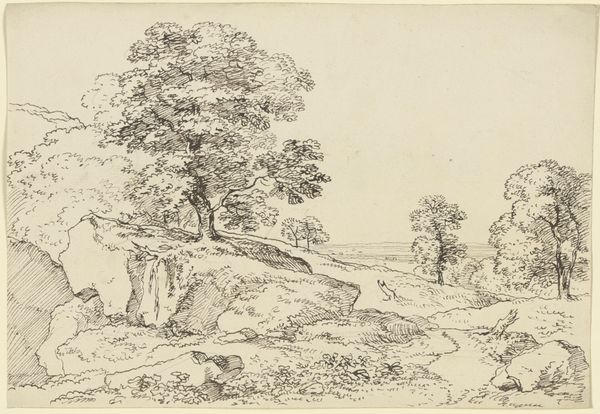
drawing, ink
#
drawing
#
baroque
#
landscape
#
ink
#
line
#
realism
Dimensions: height 67 mm, width 90 mm
Copyright: Rijks Museum: Open Domain
Jan van Ossenbeeck etched this landscape scene, featuring an ass herder, sometime in the mid-17th century. It’s made using etching, a printmaking technique that relies on the corrosive power of acid to create lines in a metal plate. The process begins with coating a metal plate with a waxy, acid-resistant substance called a ground. The artist then scratches through the ground with a sharp needle to expose the metal. When the plate is immersed in acid, the exposed lines are “bitten,” creating grooves. The depth of these grooves determines the darkness of the lines in the final print. The plate is then inked, and the surface wiped clean, leaving ink only in the etched lines. Finally, damp paper is pressed against the plate, transferring the ink and creating the print. Notice the fineness of the lines and the delicate tonal variations achieved through this labor-intensive process. Ossenbeeck’s print invites us to appreciate the skill and artistry involved in transforming raw materials into a work of art. It also subtly acknowledges the social context of pastoral life, reminding us of the labor inherent in even the simplest scenes.
Comments
No comments
Be the first to comment and join the conversation on the ultimate creative platform.
